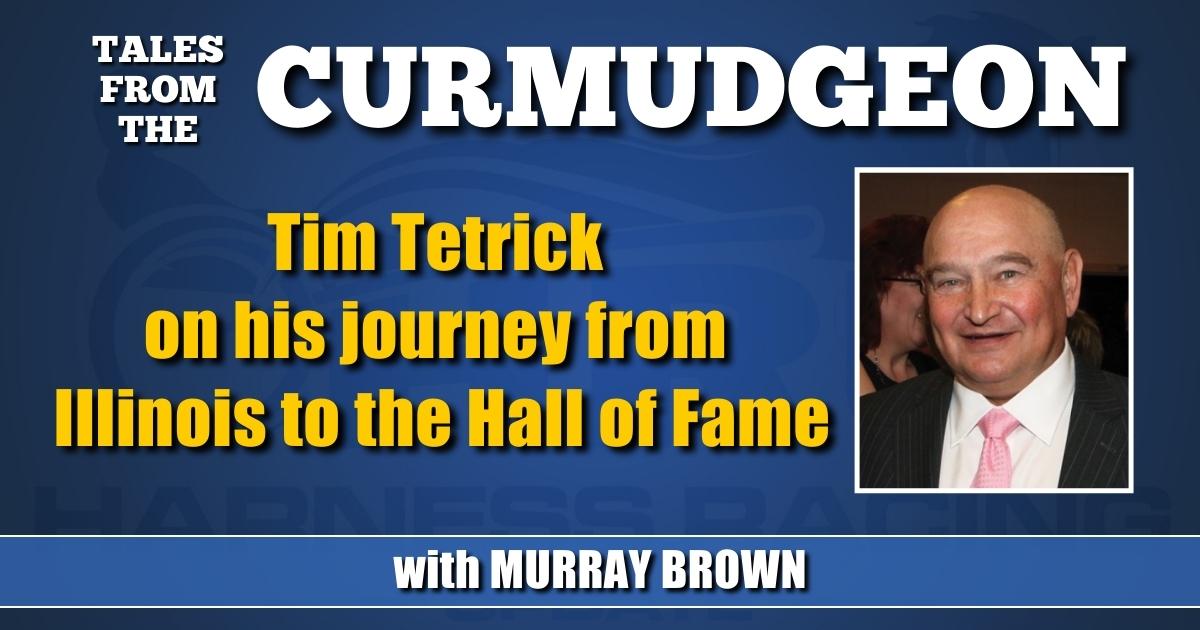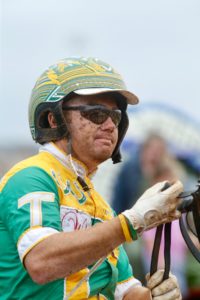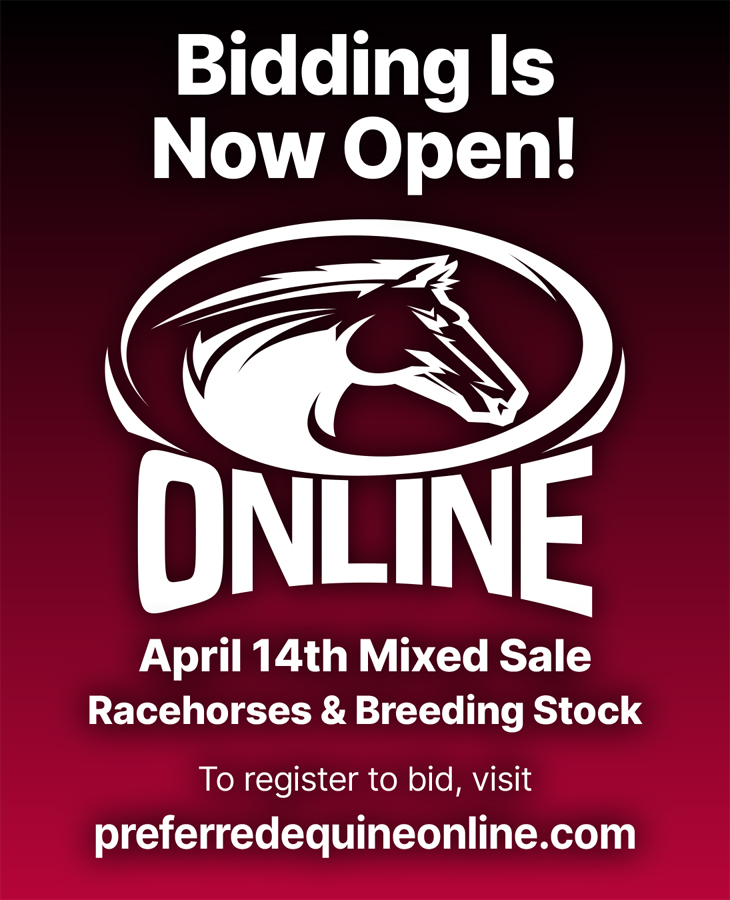Tim Tetrick on his journey from Illinois to the Hall of Fame
by Murray Brown
For as long as he can remember, Tim Tetrick wanted to spend his life driving harness horses, specifically being a catch driver. His dad Tom, an old school horseman from the days when trainers drove their own horses, was opposed to his son’s desire. He felt that to some degree catch drivers were nothing more than hired guns who were sometimes lacking in loyalty and integrity. Little did he know that he was to beget two excellent representatives of the profession: Tim, who many consider to be the very best of North American reinsmen, and Tim’s younger sibling Trace, who has become the perennial leading driver in Indiana and one of the leaders in the Midwest.
For Tim it is now 13,172 wins and earnings of $255,270,418 since he first competitively sat behind a horse.
Though you are only 40, it seems as if you have been around the industry forever. Please take us briefly through your career in harness racing.
“Harness racing has been all that I’ve ever known or done. I was raised on a farm in rural Illinois. I started sitting behind horses before I was even a teenager. I began driving at the Illinois fair tracks as soon as I was old enough to be allowed to compete there. From the fairs I went to the Chicago tracks where I was one of the youngest drivers racing. I did pretty well. Eventually I began to get some stakes and fast class drives. As the number of winners grew, I thought it might be time to head east where I might get to drive some Grand Circuit stock and be able to compete at The Meadowlands against those that I thought were the best in my chosen profession. I got lucky and did fairly well. Here I am.”
In your evolution were there any drivers that you patterned yourself after?
“I wouldn’t necessarily say patterned after, but I would say that the two drivers I initially learned the most from were Tony Morgan and Dave Magee. Both those guys were not only exceptional drivers, but they are also great horsemen.
“If I were to compartmentalize what I learned from them I would say that Tony helped me in actually becoming a catch driver. He taught me how to conduct myself with trainers and owners. The number one lesson I think I learned from him is when I’m put down to drive more than one horse in a race to go with the one I think is the best. I’ve tried to do that, but my choices have not always been on the money. I once booked off of Royalty For Life and he went on to win the Hambletonian for Brian Sears and his trainer George Ducharme.
“Dave, more than anyone else taught me how to drive and teach the young horse. I’ve never been much of a whip guy and neither was Dave. With a small number of exceptions, horses will respond more from repetition and kindness than they will from being pummelled.”
Who are the best horses you’ve ever seen or raced?
“With pacers I’d have to go with Bulldog Hanover. The races he hung up this past year were incredible. To stay as good as he was through five races over a month was without equal in our sport’s history. For 3-year-olds I’d have to go with Somebeachsomewhere. For 2-year-olds Captaintreacherous was an exceptional colt. Another one that I think I need to mention was Southwind Tempo. I’d be remiss if I didn’t also mention Shartin and Lyons Sentinel who are two of the best pacing mares ever. I’m sure there are others that I’ve left off. To their connections, I apologize for the oversight.
“With trotters, the greatest trotter both at 2 and 3 was Walner. I suppose that most people might say Muscle Hill because he raced more and won the Hambletonian. I would disagree. We never saw how good Walner really was. I believe if he had stayed sound, he would have broken every trotting record there ever was. The best older trotter that I had anything to do with was Buck I St Pat. She was a truly marvelous mare who came to do battle every time she raced. There have been others of course. Two that come to mind are Market Share with who I was fortunate enough to win the Hambletonian and Chapter Seven who I believe was the best trotting colt that year, but, unfortunately, he was not on Hambletonian day. Another great trotter that I was privileged to drive at both 2 and 3 was Check Me Out.”
Speaking of Chapter Seven, have you been at all surprised by his fantastic success in the stud?
“Not really. He was a really great horse who was the best of his age group. I think two things might have hurt his perception. The first was that he wore hobbles. I’m guessing that might have offended some purists. I don’t believe he really needed them – especially not at 3 and 4. He would have been every bit as great without them. The second was that he stood in New York. Whether justified or not, there are a lot of breeders, especially those that breed for the market who just aren’t going to send a valuable mare with a young foal at foot to New York and back in a truck. His success has been so great that I believe those same breeders might be now willing to take that chance. The quality of his mares has risen. I believe so will his success rate as a sire as he continues to get the best of the breed to his harem.”
What has been your greatest thrill in racing?
“That would have to be winning the Hambletonian with Market Share. What a great and honest trotter he was. What was a great day, nearly turned out to be a super great one. Check Me out was going to win the Oaks as well, but she out trotted herself and made a break on the last turn.”
Tell us about your Hall of Fame induction?
“I was simply overcome with emotion. In my greatest dreams I never would have allowed myself to think that one day I might make it to Goshen. There was a time that I would have thought it unlikely that I’d ever win even a thousand races. Now I’ve won over 13,000 of them. That was the greatest of all days. Here I was surrounded by friends, family and my peers on the racetrack. It was too much to comprehend. I just about broke down. It was a perfect storm matching happiness and the incredulity of my being there.”
Tim, based upon your present numbers, it isn’t farfetched to think that sometime in the next decade or so you will surpass John Campbell as the all-time leading money winning driver ever.
“Surpassing John Campbell in just about anything would be an incredible feat. In simple terms, he is the greatest all time driver the sport has ever known – our GOAT. It isn’t something I have as a specific goal. If and when it comes, I will be most grateful for the opportunities given to me on the road to getting there. There isn’t a day that goes by when I am not appreciative of the many people, who have been instrumental in helping me get where I am today. Without the many trainers and owners who have placed their confidence in me, there would be no way I would have reached the status that I now enjoy.”
It’s now January. You are on the cusp of a new season. How is life for Tim Tetrick these days?
“It’s kind of a down time for me at this time of year. I occupy the bottom rung in our family. My wife, Ashley, is a great person. Without her I wouldn’t be where I am. She acts as my traffic director. Our daughter, Trysta, is smarter than both of us. She is a great joy. Both Ashley and Trysta love the horses and take a great interest in what I do to make a living. I get to spend more time with them now than during the prime summer and fall racing months when I am on the road so much. I still drive at Dover Downs a few times a week and will go to The Meadowlands if called upon. Although racing at The Meadowlands without the winter series’ that used to make racing there so much more interesting during that time of year are no more. I appreciate being away from the grind of late nights and so much travel. Don’t get me wrong. Now is somewhat of a wind down time for me. When the days get longer and the weather gets warmer, my competitive juices will start flowing once again and I will ache to be back in the sulky on a daily basis doing what I enjoy doing most.”
Have a question or comment for
The Curmudgeon? Reach him by email at: hofmurray@aol.com



















